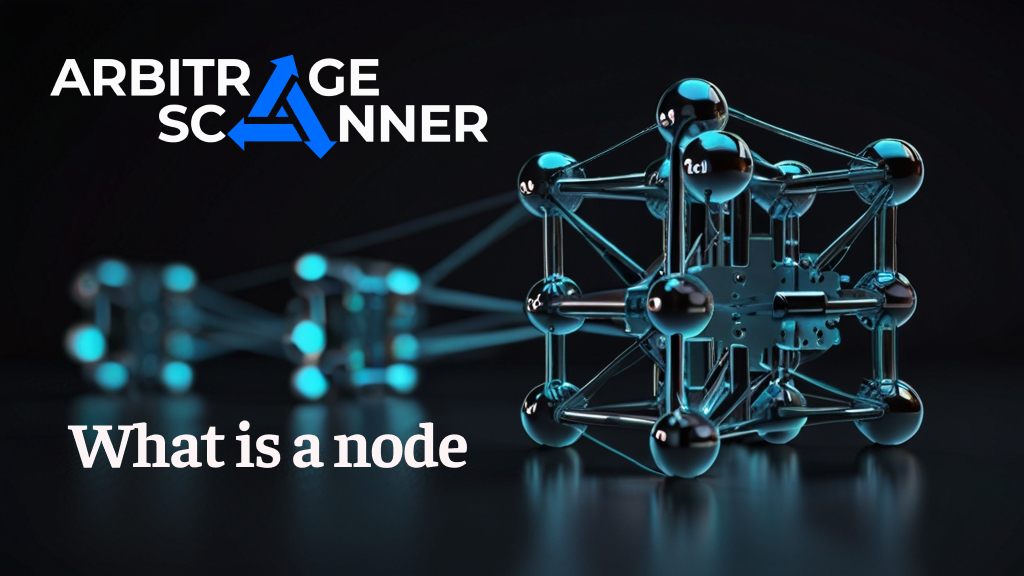What is a node in cryptocurrency

WHAT IS A NODE IN CRYPTOCURRENCY
The term "node" comes from the Latin word "nodus," meaning knot. In the crypto community, you have likely heard this term multiple times.
Nodes are considered to be computers connected to a blockchain network. This network aims to distribute data among other nodes. All this is necessary for the exchange of decentralized information within the blockchain.
A node can function either as an intermediary or as the final recipient of data.
TECHNICAL FEATURES OF NODES
Nodes, or servers, synchronize with other similar computers. As a result of this approach, a blockchain is formed. This network allows for the rapid distribution of large data sets.
The operation of a node directly depends on the server's power. Any device capable of transmitting data over the global internet can be used as a node.
Additionally, special software is required for the node to function.
Devices without an internet connection cannot perform the function of a node. However, once connected to the internet, they can become a full-fledged node.
WHY NODES ARE NECESSARY
As is known, most blockchains are decentralized. This means a network of synchronized servers is necessary for uninterrupted operation. Thus, the first major task of a node is:
Maintaining decentralization without sacrificing data processing speed.
Nodes can be located in different parts of the world. In this case, if connection is lost in certain regions, the blockchain will continue to operate. Thus, the second major task of a node is:
Ensuring the continuous operation of the network.
A key advantage and characteristic of cryptocurrencies is decentralization. To achieve this, blockchains use numerous insignificant nodes. These nodes store the entire transaction history. Thus, another major task of a node is:
Creating a decentralized ledger of distributed data.
Those who provide their devices for the blockchain's operation receive rewards. Depending on the consensus (POW, POS), nodes receive rewards. Thus, the final major task of a node is:
Rewarding network participants for providing computing power.
TYPES OF NODES
Depending on their functions and purposes, there are various types of blockchain nodes. These include both standard types common to many blockchains and additional types often used in networks with extended functionalities.
FULL NODES
They form the backbone of the Bitcoin blockchain, storing all transaction information from the network's inception.
Setting up such a node requires synchronization, which takes considerable time and memory on a PC.
Nodes continuously exchange data, requiring high computing power. Signatures are also verified for transaction signing.
If disconnected from the network, resynchronization is required, downloading the latest data set.
LIGHT NODES
These networks do not contain all blockchain information but connect to a full node to retrieve data, such as account balance or transaction information.
They do not require significant power and can even operate on smartphones with quick synchronization options.
PRUNED FULL NODES
When using these, the entire blockchain is downloaded once at the initial launch. Then, part of the data, specifically old blocks, is deleted, retaining current data.
Pruned full nodes allow the user to set the amount of allocated memory.
MINING NODES
Mining nodes are necessary for mining cryptocurrency built on the POW (Proof of Work) consensus algorithm. They can be either full or light nodes.
To run such a node, powerful equipment is required, capable of high-speed computing (CPU, GPU, ASIC), and of course, special software.
For the mining process to start, the node must solve a complex mathematical problem to find a unique hash value.
Once the mathematical problem is solved, the found solution is verified by other nodes. If verified successfully, the miner adds a new block and receives a reward.
STAKING NODES
Staking nodes are used in blockchains built on the POS (Proof of Stake) consensus algorithm. They operate similarly to mining nodes, where nodes verify transactions and add new blocks, receiving rewards.
These nodes can be either light or full. The reward depends on the number of coins the nodes are willing to stake. The main difference from mining nodes is the lack of need for expensive equipment.
MASTERNODES
These are akin to full nodes that store all the information from blockchains and synchronize with them. Additionally, they provide extra functionality that ensures transaction anonymity.
In anonymous transactions, masternodes mix the coins, making it difficult to establish a link between the sender and the receiver.
As an incentive, the owners of these nodes receive a portion of the miners' fees. The size of this reward depends on the type of blockchain (POS or POW).
LIGHTNING NODES
These are a second-layer solution for the blockchain of the first cryptocurrency, consisting of networks of payment channels. Specialized high-speed nodes work on this system, synchronizing with each other and with the main blockchain.
The main feature of Lightning nodes is that they only verify transactions that are connected to them. This feature ensures maximum data processing speed.
ORACLES AND VALIDATORS
These are additional functions of nodes in the network, thanks to which:
-
Validator nodes approve transactions by preliminarily checking them according to the blockchain's operating algorithm. Validators are entitled to a certain emission of assets in the network as a guarantee of their reliability.
-
Oracles transmit information from external systems directly into the blockchain. An example of a data source that oracles work with can be the API (Application Programming Interface) of external services. Receiving information, oracles transmit data to blockchains, where smart contracts use them to automate the work of certain services.
WHAT IS A FORK IN CRYPTOCURRENCY
The term "fork" describes a situation where a blockchain network splits into several branches. Each of them will have its own independent history after a certain block is mined. In turn, nodes have the right to choose which branch to work with.
There are two types of forks:
- Soft Fork. This occurs when changes in the protocol are compatible with the previous version. Nodes, in turn, can continue to operate without updates. However, new functionality and improvements will only be available to those nodes that have switched to the new version.
- Hard Fork. This occurs when protocol changes are not compatible with the previous version. Such changes may include, for example, innovations in the consensus mechanism. A hard fork creates a new branch of the blockchain, where network participants decide whether to switch to the new version or not.
Want to learn more about crypto arbitrage?
Get a subscription and access the best tool on the market for arbitrage on Spot, Futures, CEX, and DEX exchanges.







